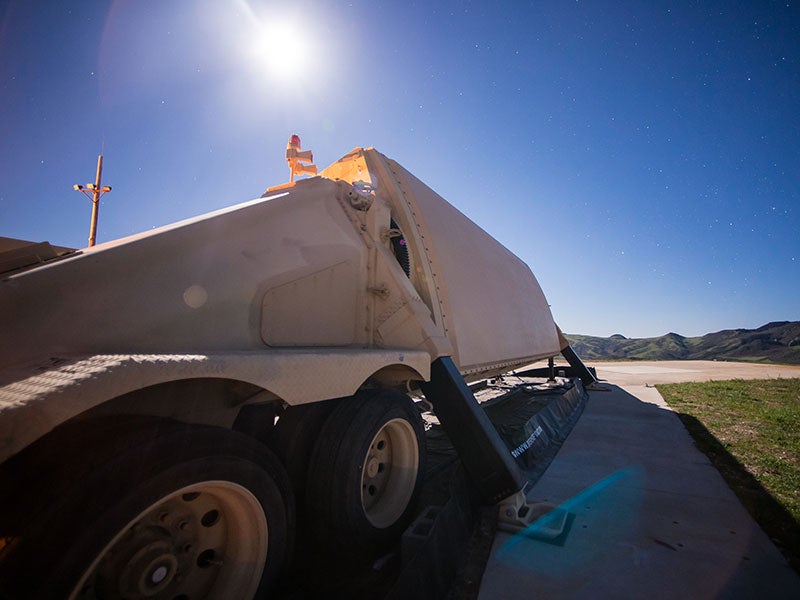
Integrated air missile defence is one of the NATO’s three deterrent priorities, alongside the nuclear deterrent and conventional forces. NATO’s European allies first called for a missile defence system that would work alongside the American missile defence system to protect Europe from missile attacks in 2007, and now the European-based shield covers nearly the entire continent.
Raytheon vice-president for European business development Chris Lombardi says: “Raytheon has made a lot of contributions into that, whether it’s the sensors that are forward deployed and helping cue and give situational awareness, or in the lower tier of the Patriot systems that are tied into it, or the interceptors that are on the frigates based out of Rota [Spain], or the ones that are stuck in the tubes at sites in Poland and Romania, this is all Raytheon. We also partner with many companies in Europe to help contribute to that.”
Improving sensor capabilities across the European continent
It was a hugely significant decision for NATO to decide to go down the continent-wide missile defence route, and it became even more important when the US and then Russia suspended the Intermediate-Range Nuclear Forces (INF) treaty in 2018, with the US formally withdrawing from it in August 2019.
“NATO is focusing more and more on what are we going to do to make it more robust, to increase its capability,” explains Lombardi. “It’s got a very good end capability but in anything, especially missile defence, you want more robustness for resilience – additional systems that can contribute so you create redundancies.”
A key part of that is improving sensor capabilities in terms of both new technology and new geographic locations.
Raytheon director for business development strategic campaigns Jonathan Casey says: “We have Romania coming online, hopefully Poland coming online soon, to provide a tremendous capability; that come together pretty quickly.

US Tariffs are shifting - will you react or anticipate?
Don’t let policy changes catch you off guard. Stay proactive with real-time data and expert analysis.
By GlobalData“We had a monumental flight test recently where the TPY-2 [transportable missile defence] radar in Turkey provided an engage-on-remote data set to the Aegis site. The interceptor was able to be launched and engage the target without even using the radar at the Aegis site. That was a big event for the architecture, but we don’t want to be reliant on a single sensor. That’s why, when we look to expanding, we’ll get more sensors in the architecture, and we’re seeing some opportunities from some of the allies that are looking to contribute with that upper-tier long-range sensor.”
Once Poland comes online, that will mark the completion of phase three of the European phased adaptive approach, the US contribution to NATO’s missile defence system, and there are currently no further phrases planned. But member states are making individual purchases.
The UK, for example, is looking to purchase a ballistic missile defence sensor and is working with the US towards a possible foreign military sale opportunity to contribute to sensing. Other countries are looking for similar opportunities, and upgrading some of their sensors. There have also been some leaps forward in technology that could increase the shield’s capability.
“On the sensor side, there’s a lot of new technology that the US has invested in,” says Casey. “Gallium nitride semiconductors use energy efficiently to boost radar signal range and capability. This is something that Raytheon has invested heavily in putting all of our new systems. One of those is the SPY-6 radar – we’re building three different variants for the US Navy and the future naval fleet. They let us see twice as far with the same size radar and using the same amount of power because the new modules are much more efficient than the old technology.”
The importance of industrial partnerships
Key to Raytheon’s success in Europe is its strong partnerships with European defence companies.
“Two thirds of our international supply chain is actually based in Europe through our international partnerships,” says Lombardi. “We have a partnership with Kongsberg on the NASAMS system which is a ground-based air defence capability that 13 nations use including in the US, which uses it around the US Capitol.
“We’re partnering with Diehl on some of the work that we’re doing for ground-based air defence in Germany. Poland state-run defence group PGZ is partnering on Patriot, which is in 17 nations now with Bahrain recently coming in. Rheinmetall is a huge partnership for us across five different domains. We form local partnerships when we bring on new Patriot customers like Aerostar in Romania, and Ramiro was recently announced in Romania.
“We don’t just come over here and sell Raytheon; a lot of what we’re trying to do is develop global partners, suppliers, understand what’s needed and in some cases bring that technology back to the US as well,” Lombardi concludes.


